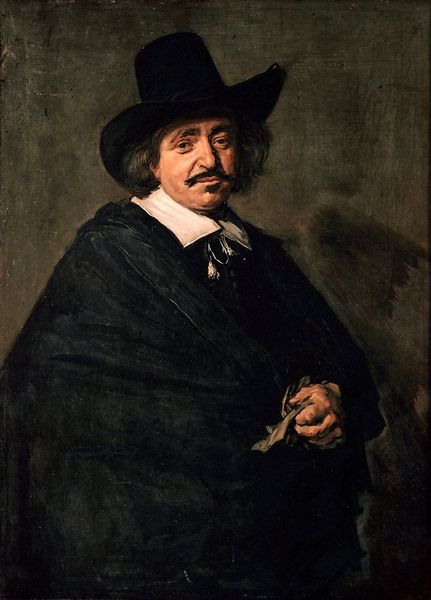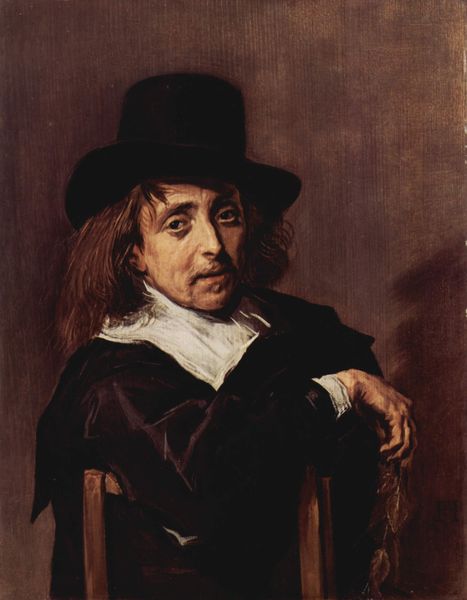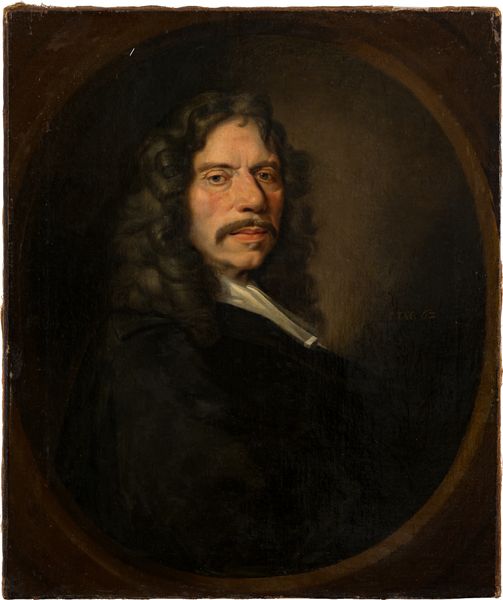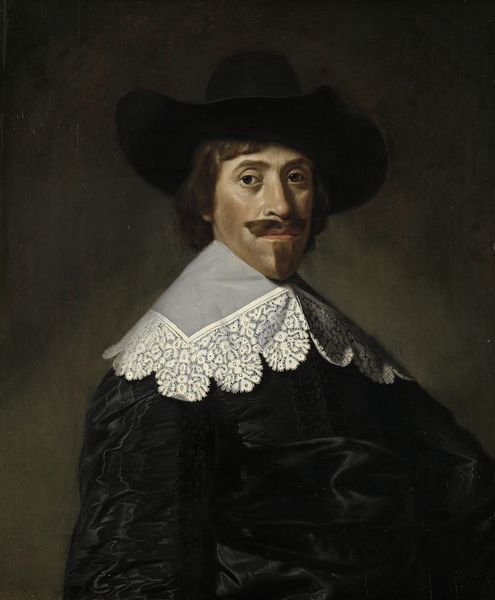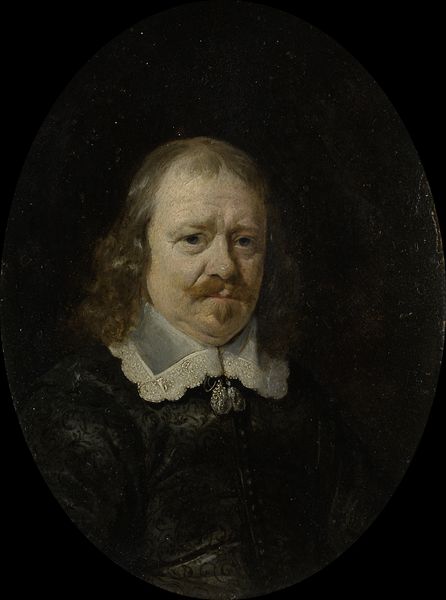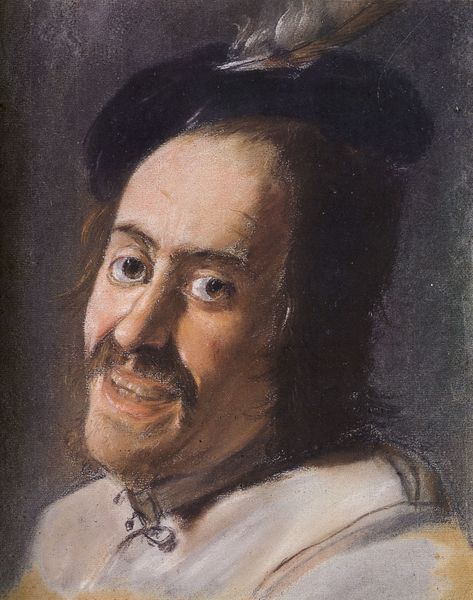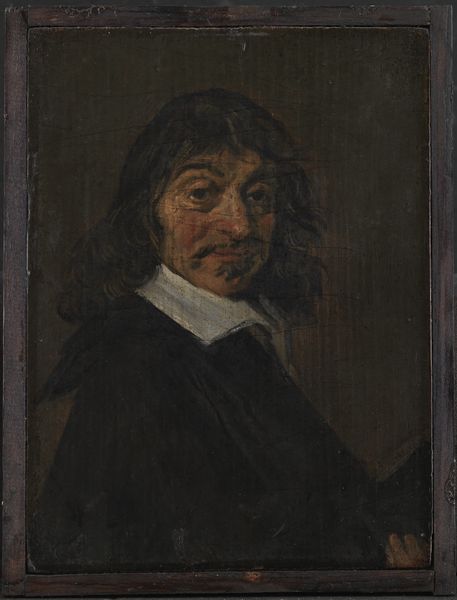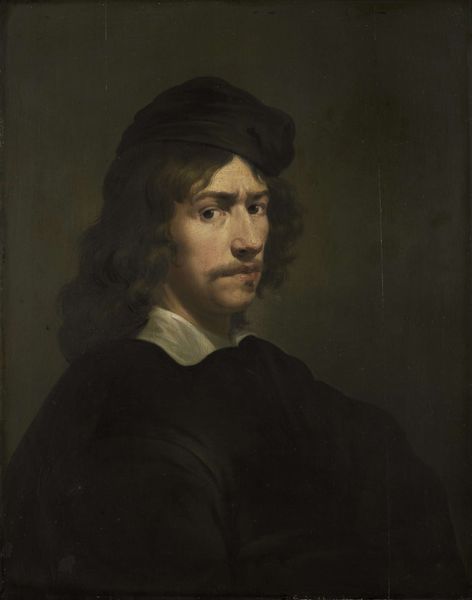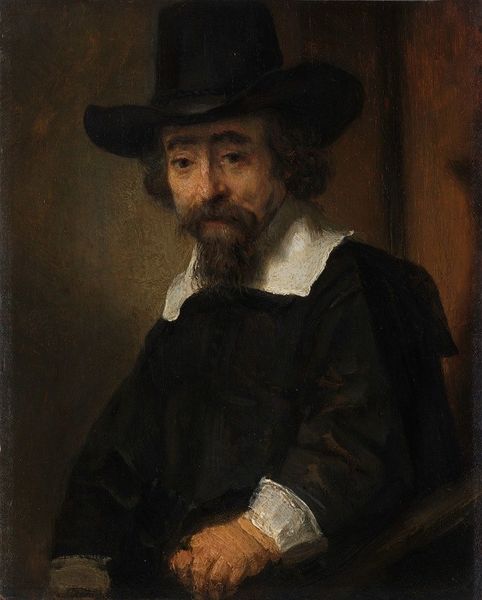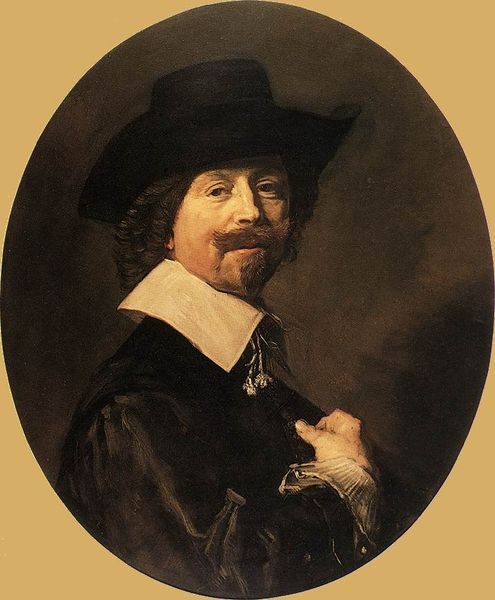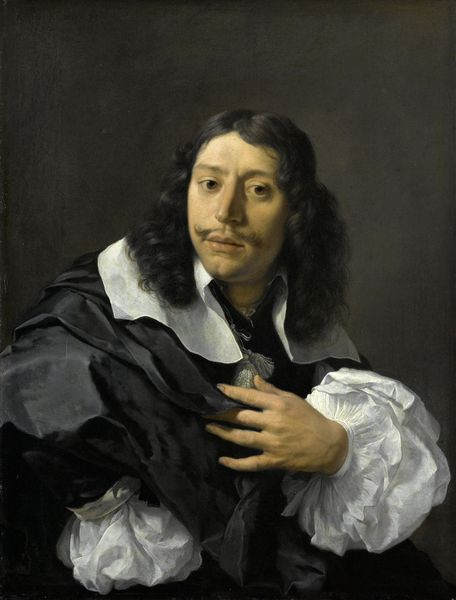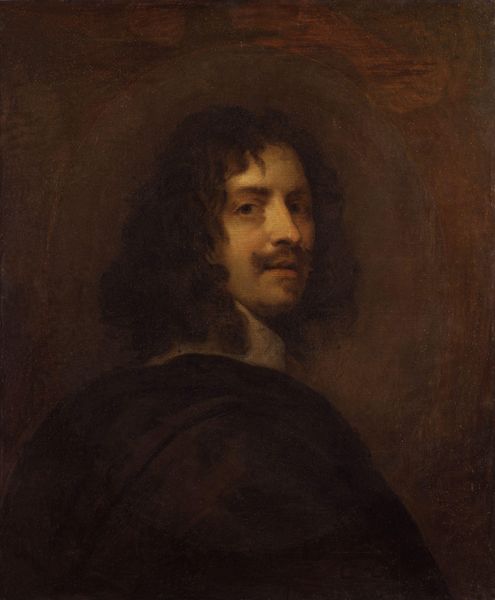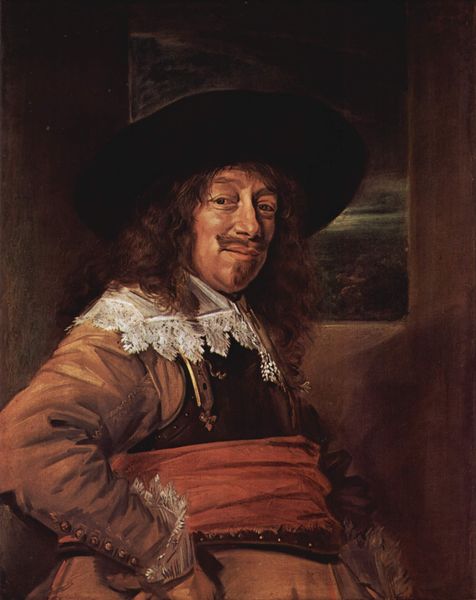
painting, oil-paint
#
portrait
#
self-portrait
#
baroque
#
painting
#
oil-paint
#
history-painting
#
realism
Dimensions: 12 7/8 x 11 in. (32.7 x 27.9 cm)
Copyright: Public Domain
Curator: Let’s turn our attention to a striking portrait attributed to Frans Hals, dating from the 1650s and residing here at The Met. It's an oil painting. What are your initial thoughts? Editor: Immediately, I’m drawn to the sitter’s direct gaze. It's incredibly intimate. And the darkness that envelops him creates a profound sense of depth and perhaps, a touch of melancholy. I wonder what those eyes have witnessed. Curator: That darkness is so characteristic of Hals's later works. Consider the pigment: the layering of dark tones likely involves costly materials such as charcoal blacks and umbers, a testament to the value placed on the sitter even amidst what you perceive as melancholy. What meanings do you discern in his clothing and bearing? Editor: Well, the ruffled collar peeking out hints at some societal status. But his cloak and broad-brimmed hat evoke a more carefree sensibility. The way the light catches his mustache reminds me of a Cavalier swagger, yet those slightly tired eyes tell a different story. The mustache alone points to something about his past that he may have witnessed from a historical lens, as it is very specific. Curator: It’s a masterclass in character, indeed. Look at the visible brushstrokes; the materiality of the paint is crucial. Hals's loose, expressive style challenges the formal restraint we often associate with the Dutch Golden Age. His style was quite innovative in his moment of production. And how the artwork continues to inspire the process of painterly touch in others! Editor: Absolutely. The symbols are not so clear cut, or dogmatic, yet his being so prominently positioned in the center of the frame is, again, very intentional, even if ambiguous. What are we to make of that ambiguity when attempting to decode not only an image, but what feels like a person and presence of complex experiences? Curator: The tension between status and character you've astutely noted can also speak to the tensions in Hals's era, during a long-standing debate around painting styles that we see him trying to synthesize: balancing representation, style, cost, material. It creates dynamism. Editor: It definitely gives us a rich tableau to draw inspiration, to which this portrait is ripe with meaning even now. Curator: Agreed, it gives pause to ponder both past creation and continued impact of those techniques to this day.
Comments
No comments
Be the first to comment and join the conversation on the ultimate creative platform.
